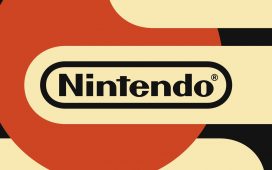Google’s Stadia is out in the wild, and let’s be honest: the reviews aren’t great. The oddball console that boasts no download times by streaming content is hampered by a launch lineup that’s almost entirely games we’ve seen before and some troubling performance issues. A system that stores nothing on its own hard drive but instead reaches out to the cloud to run software is a bold and somewhat perplexing move, but Alphabet isn’t the first company to make a bet on it. Remote gaming transmission to your system has been tried (and failed) before. Here’s our history of other attempts at streaming games.
Early Days
Gaming over interconnected systems has been a big deal nearly since computers were invented. Being able to play with someone in a different room by linking computers and having them communicate opened the door to many of the advances we’ve seen in the industry. In the early days of mainframe computing, users could access the big machines through dumb terminals that boasted little processing power themselves, and that philosophy is at the core of the modern cloud streaming concept. Systems like PLATO allowed users to log in to a remote machine and play a variety of single and multi-player games.
Bulletin board systems hosted MUDs, online dungeon crawls that let players interact with each other (although not typically in real time), and dial-up online services like Compuserve boasted role-playing epics like Island of Kesmai.
Gary Tarolli released flight simulator SGI Dogfight in 1985, which used multicasting to broadcast gameplay data from a central server to multiple users at once, a major technological advance that would be vital for more advanced online play.
The rise of home Internet also made it possible for remote servers to handle a portion of the gameplay. Multiplayer games use server-side calculation to process user input and maintain the game state, which it would then transmit out to all players. The actual work of rendering graphics would still happen on their PCs, often in combination with client-side prediction to make up for latency.
Modern cloud gaming, however, removes every single aspect of the game from the user’s machine. All their box does is send inputs and get back video and audio. But the tech behind it has been in place for way longer than you’d expect.
G-Cluster
Finnish company G-Cluster demonstrated the first application of their cloud gaming technology at E3 all the way back in 2000, but it would take quite some time for it to become a commercial product.
It’s not surprising that the traditionally tech-forward country of Japan would be the first place to try streaming gameplay from the cloud. The rise of mobile devices, which typically lacked processing power, opened the door for services to deliver visual experiences that were much more impressive than what the system could produce natively. The company paired with Broadmedia to deliver cloud-based gaming to a number of devices, including cell phones and NTT Plala’s “Hikari-TV GAME” system.
2010 saw the company pair with SFR to release 3 million set-top gaming boxes in France, and now brings their service to over 8 million customers there. In general, the company avoids high-performance titles in favor of family-friendly casual games.
In 2013, G-Cluster attempted to launch their service in the United States with the generically-titled “Game Machine,” but it doesn’t look like the device ever made it to market. They still provide cloud gaming services to Japan and several European countries.
Gaikai
Founded in 2008, Gaikai was one of the early players in the cloud gaming space. Their streaming platform used existing Web browser plug-ins like Java and Adobe Flash to capture user input and deliver it to a server to be processed, and made a big splash at the 2010 Game Developer’s Conference. The company showed a window running their Flash app and letting users play games like Mario Kart 64 and Spore, and even productivity apps like Adobe Photoshop, inside a browser.
The technology was solid, but Gaikai just couldn’t find that killer partnership that would make their product a must-have for gamers or publishers. One issue was making PC games compatible with the vast variety of input methods that other systems couldn’t duplicate. They turned heads when they got World of Warcraft on an iPad in 2010, but the massive amount of filtering and processing necessary to translate commands was a huge hassle.
Their service launched in 2011 with a two-pronged model. Publishers could use Gaikai to instantly give players access to demos of their new titles, prompting them to buy them after the limited streaming play time expired. Hardware manufacturers could contract the company to deliver a library of titles on demand with built-in apps, like Samsung did in 2012 with their Gaikai-backed Cloud Gaming service.
Sadly, we never got to see what Gaikai could have grown into, as Sony saw the work they were doing and quickly bought them out. We’ll check in with how that evolved in a second.
OnLive
2009’s GDC saw a very interesting announcement. OnLive, which had started business in 2003 as a cloud virtualization company, was getting into the games business with a new platform to launch the next year.
Similar to Steam, OnLive offered players a selection of AAA titles for purchase. But while that platform had you downloading those titles to your hard drive before you played them, OnLive made them truly virtual. Games required an always-on Internet connection, no matter what, communicating user inputs back to the server and sending back audio and video signals. They offered a product both for PCs as well as through a “microconsole” that connected to any HDMI-compatible TV.
OnLive’s marketing revolved around the ongoing arms race in home gaming hardware – instead of having to continually upgrade or replace your PC to run the latest and greatest games, streaming from the cloud let you ostensibly “run” games far more powerful than your processor could handle. You could rent or buy games and play them on multiple devices as long as your Internet connection was fast enough.
2012 saw OnLive try their boldest move yet: OnLive Desktop, which moved beyond gaming to let you essentially run a remote computer through your PC or tablet. This raised hackles with numerous companies including Microsoft, who claimed OnLive was violating licensing terms. In August of that year, the company laid off their entire staff.
GameFly
Everybody knows that Netflix started out mailing DVDs to your door before pivoting into streaming, so what was to stop GameFly from doing the same? The subscription game rental service launched in 2002 with a simple value proposition for hardcore gamers: by renting instead of buying, you could play for as little or as long as you wanted.
It was no surprise when the company got into the cloud streaming business in 2015, with Amazon Fire TV their initial target platform. Unlike their traditional selection, streaming customers were limited to a selection of PC games and required to have a gamepad to use with them. They eventually expanded to a few other hardware platforms, but the pricing model was off, asking users to pay for “bundles” of selected titles instead of having access to an entire library.
The company shut down their streaming service in August of 2018 following an asset sale to Electronic Arts, although the mail-order component is still going strong.
PlayStation Now
After the little guys tested the pool and found out it wasn’t deep enough to swim in, the big names decided to throw some money at the problem. Sony bought out Gaikai in 2012 for $380 million and acquired OnLive’s patents a little later. They used this new tech to not only shore up their “remote play” service, which let PS Vita owners cast their games to home consoles and TVs and vice versa, but also introduce PlayStation Now in 2014.
Using cloud technology, the company made it possible to play a wide variety of games not only on PS4 systems, but also on the PlayStation Vita, PCs, and certain models of Bravia televisions. The service went live in early 2015 and has proven to be a steady performer for Sony, with a library of over 750 games. PlayStation Now is by far the most robust cloud gaming service on the market right now, and if you have a solid Internet connection it’s a no-brainer for $10 a month. It might not be the “Netflix of gaming” Sony wanted to create, but it’s a good first step.
GeForce Now
It’s not surprising that graphics card manufacturers would want a slice of the cloud gaming pie, as the whole business model threatens their beloved upgrade cycle. nVidia’s GRID card shipped in 2013 with support for both traditional polygon rendering as well as video decoding, and the company introduced a cloud service to accompany it. The hardware component was originally supposed to be the short-lived nVidia Shield handheld, but the company quickly rolled it out to a bevy of other devices including the Shield TV as well as Windows and MacOS computers.
Unlike the other services on this list, GeForce Now doesn’t use a walled garden to present games to you – instead, it works with existing platforms like Steam, just letting you access them from the service’s high-end datacenters. The service has around 400 games in a variety of genres. The system is currently in public beta, and we don’t know what pricing will be. At one point, nVidia stated that they would charge a flat fee per hours of game played, but we’re not sure if that’s still the case.
xCloud
It was only a matter of time before Microsoft also hopped on board the cloud streaming bandwagon. With a massive data delivery infrastructure across 140 countries and a huge software library, the Redmond-based company has a leg up already. xCloud, which might still be a placeholder name, is barely a baby at this point, but initial impressions are very solid. Their technical preview lets you play 50 games – more than Stadia – but currently only works on Android devices.
The full xCloud rollout is scheduled to hit in 2020, and Microsoft has made some pretty interesting promises. You’ll be able to run games on a much larger spectrum of platforms, as well as use different controllers – including Sony’s DualShock 4. It’s unknown whether it will be a stand-alone service or folded into the company’s successful GamePass platform, which gives you unlimited access to over 100 games for a single monthly payment.
Google Stadia
Even post-launch we have a lot of questions about Google’s Stadia platform. There’s no denying that the search engine juggernaut has the technical skill and the big fat pipes to make cloud streaming gaming feasible. But they’re not a game company, and as such can miss the mark when it comes to understanding what we want.
Stadia, which can be used on a wide variety of hardware, launched this week with a little under two dozen titles, nearly all of which had already been released on PC and consoles in the last year. Unlike xCloud or PS Now, these games aren’t included with your $9.99 a month Stadia Pro subscription – you have to pay retail price for them, even if you already own them on another platform.
Throw in Google’s reputation for ditching ambitious hardware projects a few years in (we’re looking at you, Google Glass) and betting on this horse seems worse and worse by the day. What happens when the company shuts down those cloud servers and you can no longer go back and play the games you paid for? Unanswered questions like that have dogged cloud gaming for over a decade, and until somebody can reassure the gaming public about them we don’t see streaming play replacing downloading any time soon.
















